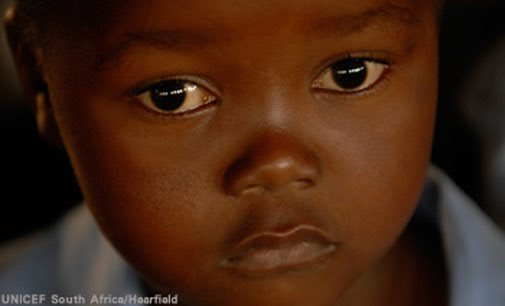
The AIDS epidemic in South Africa is devastating families and communities. The country has the world’s largest number of HIV-infected people. There are an estimated 3.7 million orphans in South Africa - close to half of them have lost their parents to AIDS-related diseases and there are many more children living with sick and bedridden caregivers. About 150,000 children are believed to be living in child-headed households. There is nothing more traumatic for a child than to see a parent die. Added to this tragedy is the loss of adult guidance and protection. Children without proper adult care are more likely to be abused and exploited. Many orphans and vulnerable children slip further into poverty once the family’s main breadwinner stops working or dies. Losing a parent or caregiver often means losing access to social grants, education and healthcare. The community is the best place for children to grow up; but the increasing burden of HIV and AIDS means that communities need support to look after their orphans and vulnerable children. Community-level responses vary greatly in resources, skills and responses. This has prompted the Department of Social Development and UNICEF to identify a model of good practice and scale it up across the country.The community-based Isibindi model, developed and implemented by the National Association of Child Care Workers, was selected on the basis of its holistic approach to the needs of children and youth affected by HIV and AIDS. UNICEF and USAID supported the establishment of the Isibindi model over the last five years. The success of this support culminated in the Minister of Social Development’s commitment to the roll-out of Isibindi to reach 1.8 million children at 1,000 sites across the country.Many abused, neglected and abandoned children land up in children’s homes. These facilities qualify as ‘child and youth care centres’, a provision of the Children’s Act that establishes a system of specialised alternative childcare programmes with proper standards and governance structures.UNICEF’s position is that children should grow up in safe family environments, whether their own or those provided by foster or adoptive parents. Child protection services in South Africa are now in a better position to plan and deliver prevention and early intervention programmes to keep children in positive family situations. National guidelines on foster care and on prevention and response to child exploitation have been completed, helping to provide standards of care and support for vulnerable children. UNICEF supported the national government and three provinces to register and oversee cluster foster care schemes, a viable form of alternative care offering quality care and protection to about 1,500 of the most vulnerable children. With the regulations on cluster foster care now in place, the entire foster care programme, currently accommodating close to 520,000 children, mostly orphaned, can be strengthened.
Authors get paid when people like you upvote their post.
If you enjoyed what you read here, create your account today and start earning FREE STEEM!
If you enjoyed what you read here, create your account today and start earning FREE STEEM!
Hi! I am a robot. I just upvoted you! I found similar content that readers might be interested in:
https://www.unicef.org/southafrica/protection_6631.html
Downvoting a post can decrease pending rewards and make it less visible. Common reasons:
Submit
Icetah
Downvoting a post can decrease pending rewards and make it less visible. Common reasons:
Submit
Congratulation
Today one year ago you joined SteemItThank you, for making SteemIt great and Steem on for more years to come!
(You are being celebrated here)
Downvoting a post can decrease pending rewards and make it less visible. Common reasons:
Submit